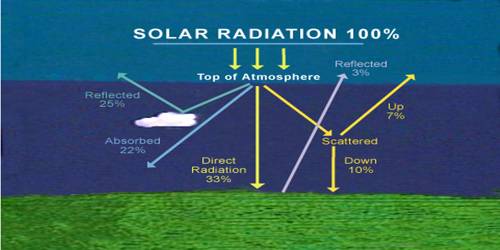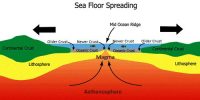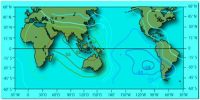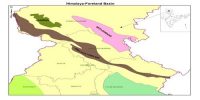Passage of Solar Radiation through the Atmosphere
The atmosphere is largely transparent to shortwave solar radiation. The incoming solar radiation passes through the atmosphere before striking the earth’s surface. Within the troposphere water vapor, ozone and other gases absorb much of the near-infrared radiation.
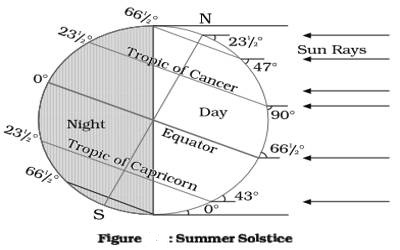
Very small-suspended particles in the troposphere scatter visible spectrum both to space and towards the earth surface. This process adds color to the sky. The red color of the rising and the setting sun and the blue color of the sky are the results of scattering of light within the atmosphere. Some of this incoming radiation is reflected off clouds, some are absorbed by the atmosphere, and some passes through to the Earth’s surface.
Spatial Distribution of Insolation at the Earth’s Surface
The insolation received at the surface varies from about 320 Watt/m2 in the tropics to about 70 Watt/m2 in the poles. Maximum insolation is received over the subtropical deserts, where the cloudiness is the least. The Equator receives comparatively less insolation than the tropics. Generally, at the same latitude, the insolation is more over the continent than over the oceans. In winter, the middle and higher latitudes receive less radiation than in summer.
